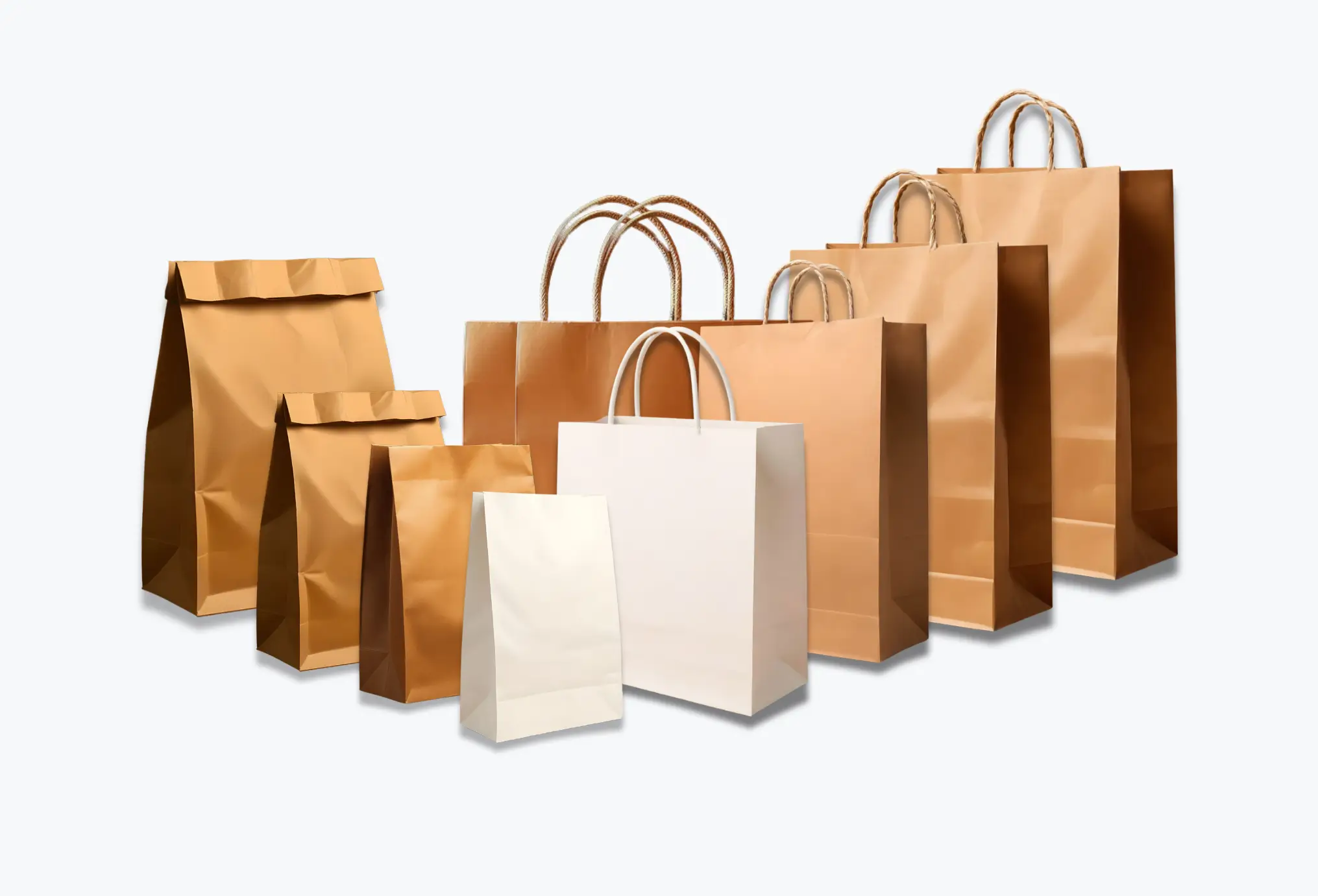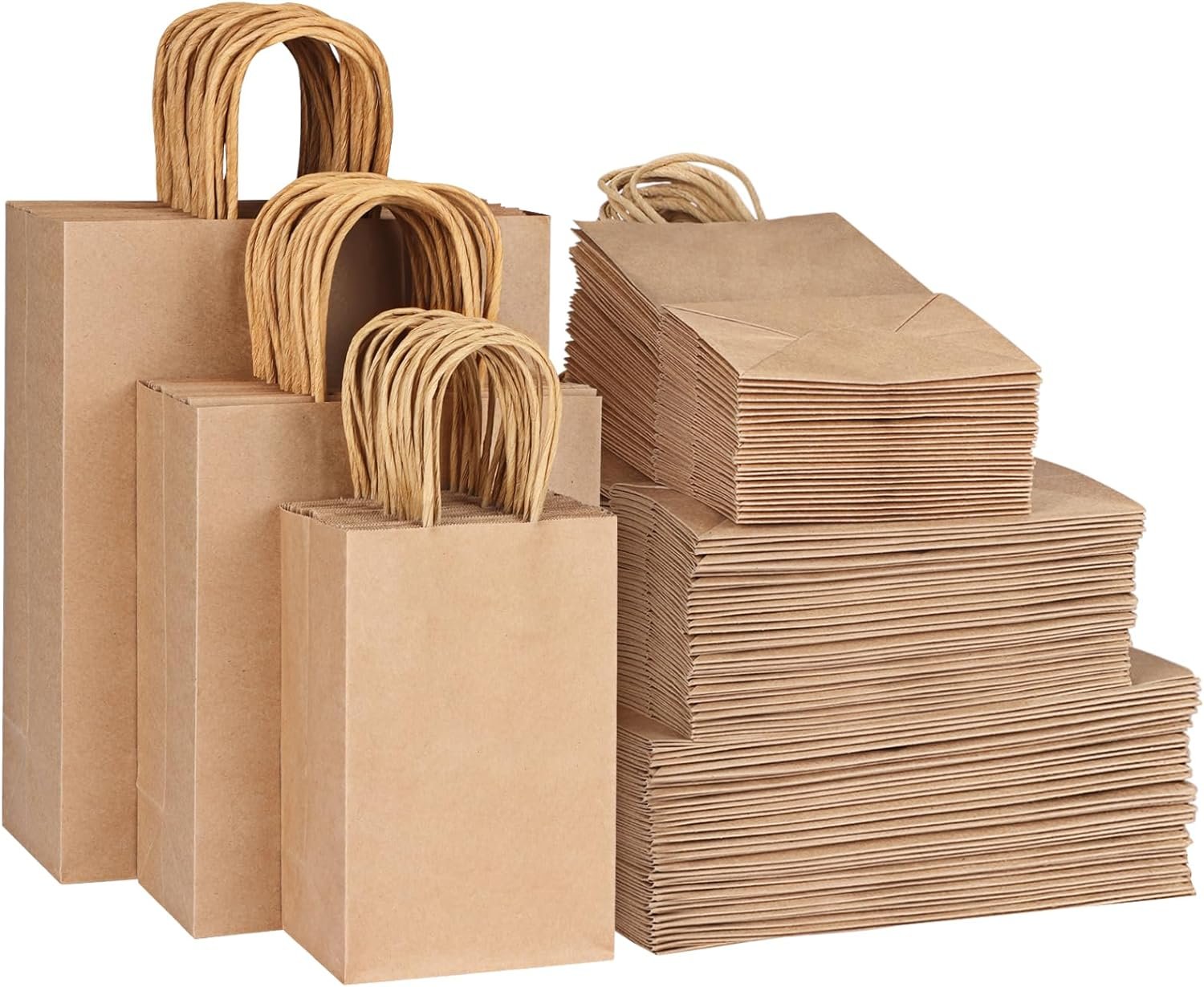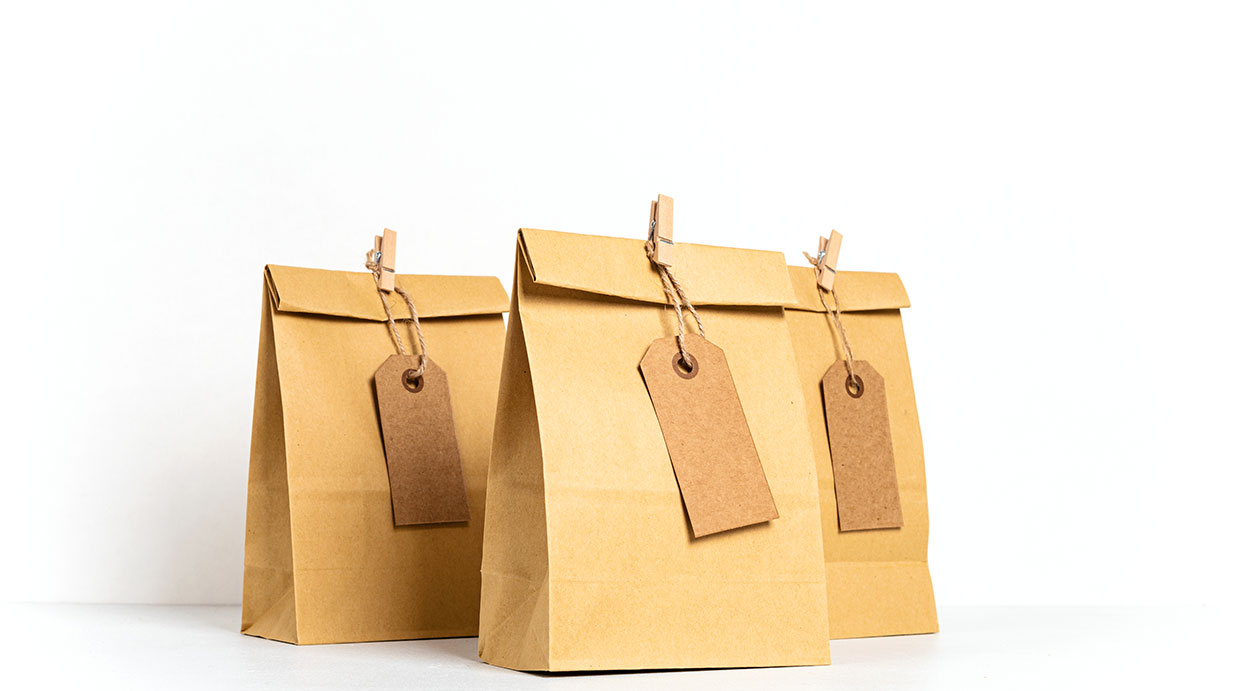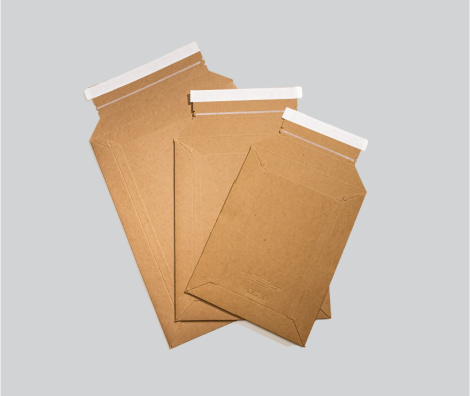Sustainable, Eco-Friendly Paper Pouch & Paper Bag for Packaging: Durable, Customizable, Biodegradable Solutions for Modern Businesses and Everyday Use .


Paper Bag
The paper bag industry has experienced significant growth in recent years, driven by the increasing demand for sustainable, eco-friendly packaging solutions. As consumers become more environmentally conscious and regulations regarding plastic usage tighten, paper bags have become a viable alternative for businesses across a variety of industries. Paper bags change the landscape of packaging, from foods and drinks to cosmetics and medicines. This blog explains in detail about history, current trends, advantages, problems, and the future outlook of the paper bag industry.
The origins of paper packaging can be traced back to ancient China, where the first forms of paper were created. However, the modern use of paper for packaging began during the industrial revolution in the 19th century. Initially, paper bags were simple and not sophisticated, but more durable and functional paper bags were developed by the results of production technology. As time goes on, paper packaging turn into complex industries and provide a variety of solutions to meet various market requirements.
Types of Paper Pouches
Paper pouches come in different forms, each catering to specific needs:
Flat Pouches: These are simple, flat, and often used for single-use applications like spices, tea, or seeds.
Stand-Up Pouches: With a gusset at the bottom, these pouches stand upright on shelves, making them ideal for products like snacks, coffee, or pet food. Ziploc Bags: These bags have a resealable zipper that is convenient and prolongs freshness, and are often used for dried fruits, nuts, powders, and more.
Window Pouches: These pouches have a clear window that allows consumers to see the product inside, making items like cookies and cereal more appealing. Kraft Pouches: Made from kraft paper, these pouches are durable and biodegradable, and are often used by environmentally conscious brands.
Advantages of Paper Bags
Eco-Friendly:
Paper bags are biodegradable, recyclable, and often made from renewable resources, making them a sustainable alternative to plastic.

Versatile:
These bags can be used in a variety of industries, including food, cosmetics, pharmaceuticals, and retail. Customization:
Paper bags have excellent printing capabilities, allowing brands to design attractive and informative packaging.
Lightweight and durable:
Despite their light weight, paper bags are strong enough to protect the products inside from external factors such as moisture, light, and air. Economically Favorable:
Paper packaging is often more affordable than other eco-friendly materials such as glass and metal. Types of Paper Bags
Paper bags come in a variety of shapes, each fulfilling a specific need.
Flat Bags: Simple, flat bags, often used to hold disposable items such as spices, tea, and seeds.
Enough Bags: Gusseted at the bottom, they can be placed upright on a shelf and are ideal for items such as snacks, coffee, and pet food. Ziploc Bags: These bags have a resealable zipper that is convenient and prolongs freshness, and are often used for dried fruits, nuts, powders, and more.
Window Pouches: These pouches have a clear window that allows consumers to see the product inside, making items like cookies and cereal more appealing. Kraft Paper Bags: Made from kraft paper, these bags are durable and biodegradable, and are often used by environmentally conscious brands.
Industries that use paper bags
Food and beverage:
Paper bags are widely used to package snacks, coffee, tea, spices, and bakery products.
Cosmetics and personal hygiene products:
Eco-conscious beauty brands use paper bags for products such as face masks, bath salts, and creams. Pharmaceuticals:
Single-dose medications and supplements are increasingly packaged in paper bags.
Retail and e-commerce:
Apparel, accessories, and other retail items are often shipped in paper bags, improving the unpacking experience for consumers. Pet care:
Pet food and treats are now packaged in resealable paper bags, in line with sustainable development trends.
Issues in the Paper Bag Industry
Barrier Properties:
Paper does not inherently have strong barrier properties against moisture and oxygen, which can be a problem for perishable goods. However, innovations in coatings and laminates are addressing this issue.
Cost of Production:
While paper is generally cost-effective, the addition of protective layers or customization can increase costs.

Paper Pouch
Durability Concerns:
Paper is less resistant to tearing compared to plastic, posing challenges for heavy or sharp-edged products. Processing issues:
Laminated and co-processed paper bags are difficult to recycle, which goes against environmental considerations.
Competition for plastic:
Despite environmental concerns, plastic remains the dominant material due to its superior functionality and low cost.
Technological innovations
The paper cover industry is evolving rapidly, thanks to progress in technology:
Water resistant coatings:
Innovative coatings improve water resistance to paper bags without compromising their recyclability.
Binedable LMIS:
These laminates provide the necessary barrier properties while maintaining ecological adhesion. Digital Printing:
High-quality digital printing allows for dynamic designs and rapid product customization to meet the needs of small-scale production.
Smart Packaging:
QR codes, augmented reality (AR), and near-field communication (NFC) are integrated into paper bags to provide consumers with product information and interactive experiences.
Compostable Adhesives:
Adhesives used in paper pouches are now being developed to be compostable, aligning with sustainability goals.
The Future of the Paper Pouch Industry
Increased Demand for Sustainability:
As more businesses adopt sustainability initiatives, the demand for paper pouches is expected to grow exponentially.
**Expansion in **Technological Innovations
The paper pouch industry is rapidly evolving, thanks to advancements in technology:
Water-Resistant Coatings:
Innovative coatings enhance the water resistance of paper pouches without compromising their recyclability. Viding LMI:
These laminates provide necessary barrier characteristics while maintaining ecological adhesion.
Digital printing:
High -quality digital printing enables dynamic concepts and quick personalization, satisfying production needs in small groups. Smart Packaging:
QR codes, Augmented Reality (AR) and Near Field Communication (NFC) are being integrated into paper bags to provide consumers with product information and interactive experiences.
Compostable Adhesives:
Adhesives used in paper bags are now being developed to be compostable to meet sustainability goals.

Emerging Markets:
Emerging economies are showing increasing interest in environmentally friendly packaging, presenting significant growth opportunities for the paper bag industry.
Regulatory Support:
Government policies banning single-use plastics are encouraging the shift to paper-based alternatives. Partnering with converters:
Partnerships between paper bag manufacturers and recyclers improve the recycling performance of complex materials.
Design innovation:
The paper bag of the future will have improved features such as better resealability, increased strength and improved water resistance.
The paper pouch industry is at the forefront of the sustainable packaging revolution. While challenges remain, technological advancements and growing environmental awareness are driving its growth. As businesses and consumers continue to prioritize eco-friendly solutions, pouch industry is poised to play a crucial role in shaping a greener future. By embracing innovation and collaboration, the industry can overcome its limitations and expand its footprint across the globe.
Emerging Markets:
Emerging economies are showing increasing interest in environmentally friendly packaging, presenting significant growth opportunities for the bag industry.
Regulatory Support:
Government policies banning single-use plastics are encouraging the shift to paper-based alternatives. Partnering with converters:
Partnerships between paper bag manufacturers and recyclers improve the recycling performance of complex materials.
Design innovation:
The paper bag of the future will have improved features such as better reseal ability , increased strength and improved water resistance.
Coffee brands:
Several craft coffee brands have switched to resealable kraft bags. This approach not only fits their brand image but also appeals to environmentally conscious consumers. Snack companies:
Leading snack food manufacturers are using paper window bags to display their products while reducing plastic waste. These bags have proven effective in increasing shelf appeal and sales. Cosmetic Startups:
Eco-friendly beauty startups are adopting minimalist, compostable paper pouches for their products, resonating with their target audience.
Automated production lines:
Automation has greatly improved the efficiency and scalability of bag production.
Sustainable material sources:
Manufacturers now prioritize materials from sustainable sources, such as FSC-certified paper. Energy Efficiency Measures:
The implementation of energy-efficient equipment and renewable energy sources reduces the carbon footprint of the production facility.
Waste Management:
An innovative waste management system is in place to recycle waste and minimize material wastage during the production process.
The role of startups in innovation
Startups play a key role in the development of bag industry. With their agility and spirit of innovation, these companies have achieved the following:
Developing compostable solutions:
To address environmental concerns, startups are introducing fully compostable bags that decompose within months. Custom packaging:
The customization options offered by startups allow brands to create unique packaging that stands out in a competitive market.

Collaborating with brands:
Many startups work directly with brands to design and manufacture packaging solutions that meet their specific needs. Use of technology:
From smart packaging to AI-powered manufacturing processes, startups are at the forefront of integrating technology into the industry. Automated production lines:
Automation has dramatically increased the efficiency and scalability of bag production.
Sustainable sources of materials:
Manufacturers are now prioritizing materials from sustainable sources, such as FSC-certified paper. Economic practice:
The introduction of high -energy -efficient mechanisms and renewable energy sources decreases the amount of carbon in production facilities.
Waste Management:
Innovative waste management systems are introduced for waste disposal and minimize the loss of equipment during production.
Global Market Expansion:
The pouch market is expected to grow at a compound annual growth rate (CAGR) of 6-8% over the next decade, driven by rising demand in emerging markets.
Integration of AI and Automation:
Advanced technologies will further enhance production efficiency and reduce costs. Circular economy model:
The industry is moving towards a circular economy model that emphasizes reusing and recycling materials.
Consumer education:
Educating consumers on the proper disposal and recycling of bags will increase the environmental impact. Partnerships and collaborations:
Strategic partnerships between producers, brands and processors will drive innovation and sustainability in the industry.
The paper bag industry is at the forefront of the sustainable packaging revolution. While challenges remain, technological advancements and growing environmental awareness are driving its growth. Companies and consumers continue to prioritize environmentally friendly solutions, so paper bags on bags are ready to play a decisive role in the formation of more environmentally friendly future. By accepting innovation and cooperation, the industry can overcome its restrictions and expand the roads around the world. bags have great potential for the future and will become the basis for sustainable packaging solutions.

The paper bag and sack industry has seen significant growth over the past few decades. With growing awareness of environmental sustainability, governments, businesses and consumers are actively seeking alternatives to plastic packaging. bags and sachets have emerged as an eco-friendly, versatile and sustainable solution, driving demand across various sectors such as retail, food and beverage, pharmaceutical and e-commerce.
This article takes a detailed look at the paper bags and sachets industry, including its history, current market trends, manufacturing processes, environmental benefits and future prospects.
History of Paper Bags and Pouches
The origins of paper bags date back to the 19th century, when Francis Wole invented the first paper bag making machine in 1852. Initially used for simple purposes like carrying groceries, the humble paper bag evolved over time as manufacturing technologies advanced. Paper pouches, a modern adaptation, emerged as a response to the growing demand for lightweight, compact, and resealable packaging solutions.
The rise of industrialization in the 20th century further propelled the paper bag industry, especially with the introduction of kraft paper in 1879 by Carl F. Yes. Known for its strength and durability, this type of paper is the basis for producing high-quality bags and pouches.
Types of Bags and Pouches
The industry offers a wide range of paper bags and pouches for a variety of applications. Here are some common types:
Flat Paper Bags: Plain bags often used in bakeries and grocery stores to package lightweight items. Square-Bottom Bags: Ideal for carrying heavier goods like food items and clothing, offering stability and durability.
Twist Handle Bags: Popular in retail and gifting industries, providing aesthetic appeal and ease of carrying. Zipper Paper Bags: Resealable and ideal for food packaging, providing freshness and convenience.
Paper Window Bags: Featuring clear panels to display products, commonly used for baked goods and snacks. Custom printed bags: tailor -made for brand purposes, often seen in luxury and promotion retail events.
The global market of bags and paper bags has been increasing regularly due to plastic state rules, stable consumer preferences, and rapid expansion of electronic commercial transactions. The important trends to form the industry are:
Increase in stability: Companies go to paper wrapping and reduce carbon traces.
Innovative Designs: Businesses are investing in aesthetically pleasing and functional packaging to enhance customer experience.
E-Commerce Boom: The growth of online shopping has led to increased demand for durable and branded paper packaging. Food & Beverage Industry: Paper bags are widely used to package snacks, coffee, tea, and other fresh foods.
Luxury Packaging: Luxury brands are choosing custom paper bags to highlight their commitment to sustainability.
The production of paper and sachets involves several steps that ensure quality and efficiency. The process includes:
Raw material selection: We purchase high-quality wood pulp or recycled paper for production. Pulp and whitening: Wood is processed to create pulp, and then bleached to reach the desired color and texture.
Leaf formation: Pulp is converted into paper sheets by pressing the process and drying it. Cut and fold: The leaves are cut in certain forms and folded to form bags or bags.
Printing and stratification: individual conceptions, logos and brand elements are added for attractiveness and aesthetic features. Assembly and Quality Control: Finished products are assembled and tested to meet industry standards.
One of the main factors behind the growth of bag and pouch industry is its environmental benefits over plastic packaging. Key benefits include:
Biodegradability: Paper decomposes naturally, reducing landfill waste. Recycle: Most bags and pouches are recyclable, contributing to a circular economy.
Reduce carbon emissions: Paper bags produce fewer greenhouse gas emissions than plastic bags. Sustainable sourcing: Many companies use FSC-certified paper, which ensures responsible forest management.
Compostability: Some paper bags can be composted, enriching the soil with organic material. Industry Issues
Despite its many benefits, the bag and pouch industry faces a number of challenges, including:
Higher production costs: Compared to plastic, paper packaging can be more expensive to produce.
Limited durability: Paper bags may not be suitable for transporting heavy or wet items. Deforestation issues: The industry uses wood pulp, which can contribute to deforestation if not managed responsibly.
Competition from reusable bags: Cloth and jute bags have a longer lifespan, which competes with paper packaging. Innovations and Achievements
To overcome challenges and stay competitive, the industry is innovating in the following ways:
Waterproof coatings: New technology makes paper resistant to moisture.
Biodegradable laminates: Increased durability without compromising environmental friendliness. Digital printing: Create high-quality, customizable designs at low cost.
Smart packaging: Integration of QR codes and RFID tags for interactive customer interaction. Future Outlook
The future of the paper bag and sack industry looks promising, with projected market growth driven by:
Government policies: increasing restrictions on plastic use worldwide.
Corporate Social Responsibility (CSR): businesses prioritize sustainability as part of their branding strategy. Consumer awareness: growing preference for organic products.
Technological advances: Innovations in materials and manufacturing processes. Conclusion
The paper bag and pouch industry plays a vital role in promoting sustainable packaging solutions. As environmental concerns continue to grow, the demand for eco-friendly, versatile and aesthetically pleasing packaging will only increase. By addressing challenges and leveraging advances, the industry can lead the way to a greener, more sustainable future.




